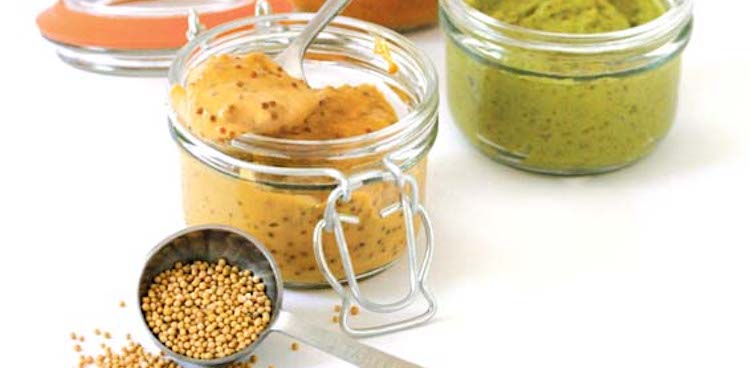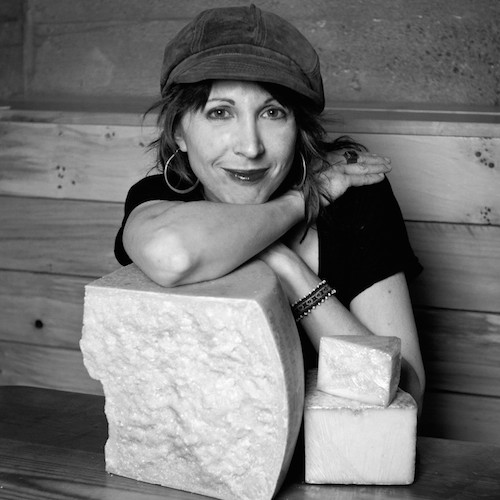
Fruit preserves, nuts, and honey often get the glory when it comes to creating a mouthwatering cheese plate, but savory can
be just as tempting.
Take classic mustard, for instance. There’s a diverse choice of specialty mustards on the market, flavored with everything from ale or Champagne vinegar to fresh herbs or fruit. Not all are compatible with cheese—anything too sweet or pungent can overload your palate, obscuring, rather than enhancing, the main attraction. But more subtle mustard, such as a coarse-grained variety, is ideal for balanced flavor and textural contrast. Says Guy Tullberg of the Tracklement Company, a UK-based manufacturer of handcrafted, small-batch mustards, “Coarse grain mustard—especially those that use whole seeds, which retain all of the essential oils—lends a clean, clear taste when accompanying cheese, especially harder varieties or some of the strong washed rinds.”
Partnered up with smoked meats or sausage, pumpernickel or rye bread, and cornichons, a wedge of cheese and a small bowl of mustard make for a hearty cheese plate, satisfying light supper, or easy picnic fare. Want to up the ante? Try making your own mustard; you’ll be surprised at just how easy it is.
In this no-cook recipe, note that the mustard seeds need to soak in the other ingredients for two days before you can blend the whole mixture. Once you’ve made a few batches, try experimenting with different types of vinegar (apple cider is a classic) or adding aromatics such as thyme or cracked peppercorns.
Makes 1 cup
- 1/2 cup dry white wine, such as Sauvignon Blanc
- 1/2 teaspoon salt
- 1/3 cup good-quality white wine vinegar
- 1/4 cup brown mustard seeds* (about 1 1/2 ounces)
- 1/4 cup yellow mustard seeds (about 1 1/2 ounces)
- Place all ingredients in a small, nonreactive (stainless steel or glass) bowl, and stir to combine. Cover tightly with plastic wrap, and let sit at room temperature for 2 days.
- Remove the plastic wrap, and transfer the mustard mixture to a blender. Blend until the desired consistency is reached, about 30 seconds for a coarse texture (keep in mind that it’s not possible for this type of mustard to achieve a completely smooth texture). Transfer the mustard to a small, nonreactive container with a tight-fitting lid, and refrigerate for up to 3 months. Note that it will lose some of its pungency over time.
*Yellow mustard seed is the traditional type, commonly used for pickling, canning, and sausage making. Brown mustard seed is smaller and hotter, traditional in Asian and African cooking. Fresh whole mustard seeds are available at Whole Foods Market and ethnic food shops, as well as atpenzeys.com.




